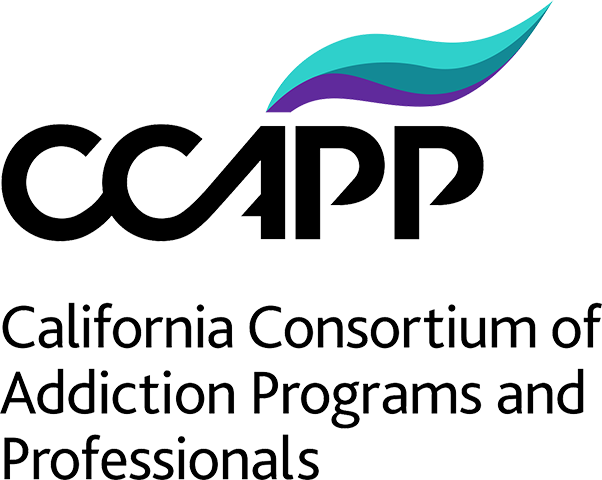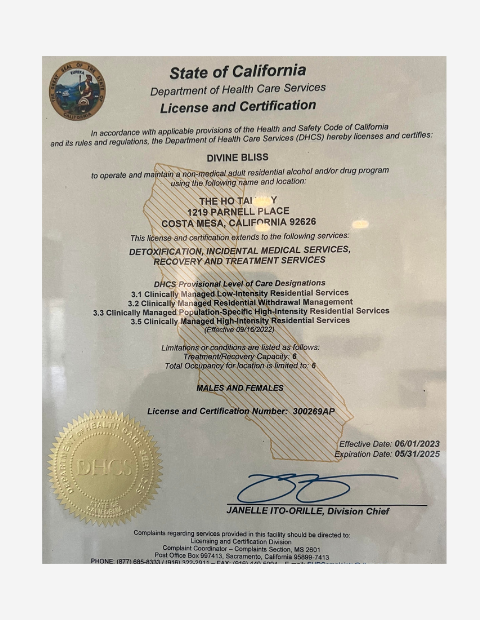Women can safely withdraw from alcohol by seeking professional medical help, engaging in a supervised detox program, understanding the specific risks and symptoms of withdrawal, and implementing robust support mechanisms throughout the process.
The journey to sobriety begins with the critical step of alcohol detox and withdrawal, a phase fraught with challenges but essential for recovery.
This process demands an approach tailored to women’s physiological and psychological needs. Recognizing the importance of safety and support underscores the journey of alcohol detoxification and addiction recovery.
This article explores how to safely withdraw from alcohol.
What is Alcohol Withdrawal?
Alcohol withdrawal is the body’s reaction to the absence of alcohol after prolonged heavy drinking.
Symptoms can range from mild anxiety and tremors to severe complications like seizures and delirium tremens (DTs).
The severity of withdrawal symptoms varies based on drinking history, health status, and individual biology, making professional guidance crucial in navigating this challenging phase.
Women undergoing alcohol detox are more likely to have co-existing mental health conditions such as depressive and anxiety disorders, emphasizing the importance of integrated mental health support (NIH).
How to Safely Withdraw from Alcohol
Safely withdrawing from alcohol requires a comprehensive approach that addresses both the physical and emotional challenges of addiction.
It involves understanding the risks, seeking professional help, and following a structured plan for detox and recovery.
Here’s how to safely withdraw from alcohol:
Understand the Risks and Symptoms of Withdrawal
Understanding the risks and symptoms associated with alcohol withdrawal is pivotal for anyone contemplating or beginning the process of detoxification. Recognizing these can prepare individuals and their support networks for what lies ahead, ensuring timely and appropriate responses to any issues that may arise.
Key Risks of Withdrawal:
- Severe dehydration
- Seizures
- Delirium Tremens (DTs)
- Elevated heart rate and blood pressure
Common Symptoms Include:
- Anxiety and agitation
- Insomnia
- Nausea and vomiting
- Tremors
- Hallucinations
Symptoms can range from mild to life-threatening and often depend on the length and severity of alcohol use. Women may experience specific symptoms more acutely due to physiological differences. It’s crucial to approach withdrawal with an understanding of these risks and symptoms, ideally under medical supervision, to navigate the process safely and effectively.
Related: 10 Signs of Alcoholism in Women
Seek Professional Help for Alcohol Detox Withdrawal
Seeking professional help and exploring the benefits of alcohol rehab for women is critical in detox, offering guidance, support, and medical care tailored to individual needs.
Healthcare professionals can assess the severity of the addiction and any co-occurring disorders to recommend the best course of treatment, whether it’s outpatient services or inpatient detoxification. They provide access to medications that can ease withdrawal symptoms, reduce cravings, and address any underlying mental health conditions.
Professional help ensures a safer detox process by monitoring for complications and adjusting treatment as necessary.
This support is invaluable for navigating the complexities of withdrawal and laying a solid foundation for long-term recovery.
Related: How to Stop Binge Drinking
Plan for a Safe Withdrawal Process
Planning for a safe withdrawal process involves several key steps, starting with a thorough assessment by a healthcare professional to determine the level of care needed.
It includes deciding on the appropriate detox setting—whether at home under medical supervision or in a dedicated facility—and ensuring a support system is in place. The plan should address potential challenges and outline strategies for managing symptoms and avoiding relapse.
Access to emergency medical care, if needed, is an essential component of the plan. Creating a detailed, personalized plan helps mitigate the risks associated with withdrawal, providing a structured path toward recovery while prioritizing safety and well-being.
Engage in a Medically Supervised Detox Program
Engaging in a medically supervised detox program is highly recommended for a safe and effective withdrawal from alcohol.
These programs offer 24/7 medical supervision, ensuring individuals receive immediate care for withdrawal symptoms or complications. Medical professionals can administer medications to alleviate discomfort, prevent seizures, and manage other health issues that may arise during detox.
The supportive environment of a detox program also provides emotional and psychological support, helping individuals cope with the challenges of withdrawal.
By participating in a medically supervised program, individuals benefit from a holistic approach to detox that addresses both the physical and emotional aspects of recovery, significantly enhancing the chances of a successful transition to sobriety.
Implement Coping Strategies and Support Mechanisms
Implementing coping strategies and support mechanisms is essential for managing the stress and challenges of alcohol withdrawal and recovery.
Effective coping strategies may include mindfulness meditation, regular physical exercise, and engaging in hobbies or activities that provide a sense of fulfillment and distraction from cravings. Emotional support is equally crucial; this can come from therapy, counseling, and support groups like Alcoholics Anonymous (AA) or other sober communities. Building a solid support network of friends, family, and peers who understand the recovery journey can provide encouragement and accountability.
These strategies and mechanisms help individuals navigate the ups and downs of recovery, offering tools to handle stress, resist the urge to drink, and build a healthy, sober lifestyle.
Develop a Long-Term Recovery Plan
A long-term recovery plan is a comprehensive strategy that encompasses all aspects of an individual’s life post-detox, focusing on maintaining sobriety and addressing the underlying issues that led to alcohol dependency.
This plan should include ongoing therapy or counseling to work through emotional or psychological challenges, participate in communal support groups, and make lifestyle changes to promote overall well-being. Physical activity, a balanced diet, and adequate sleep are crucial for physical health, while hobbies and social activities can enhance emotional health. A long-term recovery plan also involves setting personal goals and milestones, which can provide motivation and a sense of achievement.
Regularly reviewing and adjusting the plan is essential to adapt to changing needs and circumstances, ensuring continued progress toward recovery.
The Benefits of Medically Supervised Alcohol Detox Treatment
Medically supervised alcohol detox treatment is the safest and most effective approach for individuals beginning their journey to recovery. Here are the key benefits:
- Controlled Environment: Ensures a safe space where medical professionals closely monitor the detox process.
- Reduced Risk of Severe Symptoms: Medical supervision minimizes the likelihood of experiencing severe withdrawal symptoms and complications.
- Medication Management: Medications are administered to alleviate withdrawal symptoms, making the detox process more bearable.
- Holistic Care: Addresses co-occurring mental health disorders alongside alcohol withdrawal, offering a comprehensive treatment approach.
- Supportive Setting: A supportive atmosphere fosters a sense of safety and security, allowing individuals to focus on recovery.
- Foundation for Long-term Sobriety: Lays the groundwork for a sustained recovery by offering resources and guidance for post-detox’s next steps.
The Risks of Home-based Alcohol Detoxification
Opting for a home-based approach to alcohol detoxification can pose significant risks, particularly without professional oversight. Here are the main concerns:
- Lack of Professional Monitoring: Increases the risk of untreated severe withdrawal symptoms, such as seizures, hallucinations, and delirium tremens (DTs), potentially leading to life-threatening situations.
- No Medical Intervention: Without medications to manage symptoms, the withdrawal process can be more painful and distressing.
- Absence of Structured Support: The lack of a professional support system can heighten the risk of relapse.
- Emotional and Psychological Overwhelm: Attempting detox alone can exacerbate feelings of isolation, anxiety, and depression due to the absence of professional emotional support.
These lists highlight the importance of choosing a medically supervised detox program to ensure safety and support throughout the withdrawal process, contrasting with the significant risks associated with attempting alcohol detoxification at home.
Timeline of Alcohol Withdrawal
To understand how to safely withdraw from alcohol, it’s crucial to understand the expected timeline.
The timeline of alcohol withdrawal is a critical framework for understanding the progression of symptoms that individuals may experience when they stop drinking. This timeline typically unfolds in several stages, each characterized by different symptoms and challenges.
The timeline of alcohol withdrawal is a critical framework for understanding the progression of symptoms that individuals may experience when they stop drinking. This timeline typically unfolds in several stages, each characterized by different symptoms and challenges.
Stage 1: 6-12 Hours After Last Drink
Within the first 6 to 12 hours after the last alcoholic beverage, individuals may begin to experience mild withdrawal symptoms. These can include anxiety, nausea, abdominal pain, and insomnia. These initial symptoms reflect the body starting to adjust to the absence of alcohol.
Stage 2: 12-24 Hours After Last Drink
As the body continues to acclimate, symptoms may escalate. Some individuals might experience hallucinations, which can be visual, auditory, or tactile. Despite being relatively rare, these symptoms are indicative of the brain’s struggle to adapt to sobriety.
Stage 3: 24-48 Hours After Last Drink
This period may involve the continuation of symptoms experienced in the first 24 hours. Additionally, individuals are at risk of seizures, particularly those with a history of severe alcohol dependency or previous withdrawal seizures. The risk underscores the importance of medical supervision during this phase.
Stage 4: 48-72 Hours After Last Drink
The most critical and potentially dangerous phase is the development of delirium tremens (DTs) for some individuals, characterized by confusion, rapid heartbeat, fever, and high blood pressure. DTs represent a medical emergency and require immediate attention.
Stage 5: 72 Hours to Several Weeks After Last Drink
Beyond the initial 72 hours, symptoms generally begin to improve for many individuals, though some may experience prolonged withdrawal symptoms, known as Post-Acute Withdrawal Syndrome (PAWS). These can include ongoing mood swings, sleep disturbances, and cravings lasting from weeks to several months.
Understanding the timeline of alcohol withdrawal highlights the importance of medical supervision throughout the process, ensuring safety and support as individuals navigate the challenging journey toward recovery.
Alcohol Detox for Women at The Ho Tai Way
The Ho Tai Way offers a gender-specific approach to alcohol detox for women, recognizing the unique challenges they face in addiction and recovery.
Our programs provide a supportive, nurturing environment tailored to women’s needs, promoting healing and empowerment on the journey to sobriety.
Contact The Ho Tai Way to explore alcohol detox and the benefits of joining our alcohol rehab for women in Costa Mesa, California.
Frequently Asked Questions
Navigating the process of alcohol detox can be filled with uncertainties. Below are answers to some frequently asked questions to help you understand what to expect and how to manage the challenges that come with detoxing from alcohol.
How do you prevent withdrawal symptoms?
Preventing withdrawal symptoms entirely is challenging, but their severity can be significantly reduced through medically supervised detox. This approach often involves the use of medications to ease symptoms, careful monitoring by healthcare professionals, and a supportive environment that addresses both physical and emotional needs.
Can you feel sick when detoxing?
Yes, feeling sick is a common experience during detox. Symptoms can include nausea, vomiting, and a general sense of malaise. These are typical responses as your body adjusts to the absence of alcohol and begins the healing process. Medical supervision can help manage these symptoms effectively.
Does everyone get withdrawal symptoms?
Not everyone experiences withdrawal symptoms to the same degree. The severity and occurrence of symptoms vary based on several factors, including the duration and intensity of alcohol use, individual health conditions, and genetic predispositions. However, most people with a history of heavy drinking will experience some level of withdrawal symptoms.
Do you feel tired when detoxing?
Fatigue is a common symptom during detox. As the body expends energy to heal and rid itself of toxins, individuals often feel exceptionally tired. Rest and proper nutrition are vital during this time to support the body’s recovery process.
Does your body hurt when detoxing?
Yes, it’s common to experience physical discomfort, including muscle aches and pains, during detox. These symptoms occur as the body adjusts to functioning without alcohol. Engaging in gentle physical activities and receiving appropriate medical care can help alleviate these discomforts.
How long do you feel bad during detox?
The duration of uncomfortable feelings during detox varies among individuals. Typically, the most acute symptoms last from a few days up to a week. However, some symptoms, such as cravings and emotional fluctuations, may persist for weeks or months in a milder form, known as post-acute withdrawal syndrome (PAWS).
Conclusion
Now that you know how to safely withdraw from alcohol, it’s time to take the first step. Withdrawing from alcohol is a significant step towards recovery, requiring courage, commitment, and support.
For women, understanding the unique aspects of alcohol withdrawal and seeking a tailored, medically supervised approach can pave the way for a successful and safe detox process. By embracing professional help, employing coping strategies, and developing a comprehensive recovery plan, women can navigate the challenges of withdrawal and move towards a healthier, sober future.
This guide aims to provide women with the knowledge and resources needed to safely withdraw from alcohol, offering a beacon of hope and a path to recovery.









